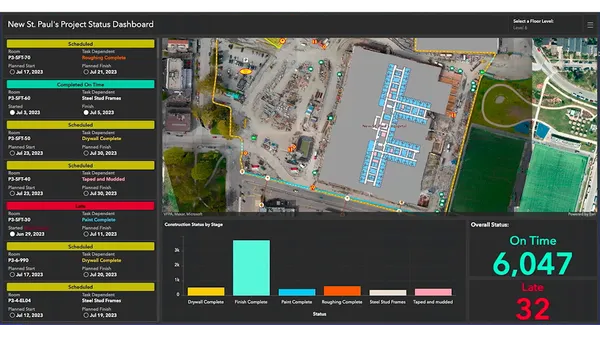The tech workforce is shifting away from familiar hubs and toward cities that haven’t traditionally been viewed as innovation hotbeds.
Houston, Detroit, and Orlando, Florida, are three cities with the fastest growing tech workforces this year, according to a Tuesday report by Dice, a technology career marketplace.
The report, which drew on analysis of more that 7 million job postings in the U.S. from January through October, found the number of postings increased 25% as compared to the same period last year, despite a slowing economy.
New York, Chicago, Atlanta, San Francisco and Austin, Texas ranked highest for job posting volume. San Diego, Minneapolis, and Charlotte, N.C., made it into the top 25.
Driving the migration from traditional tech corridors are several factors, including demand for remote work the expansion of the tech workforce in banking, manufacturing, retail and other sectors.
New hives of innovation have begun to emerge in a number of smaller cities, marking a shift away from Silicon Valley toward areas with a lower cost of living and a higher quality of life, according to an October Skillsoft report, competitive salaries.
“The notion that you have to work in Silicon Valley in order to make it in the tech industry, just like you had to work in New York City if you were going to make it in the finance industry, has broken down,” Art Zeile, president and CEO of Dice parent company DHI Group, told CIO Dive.
New jobs in new places
Most businesses today — not just in Silicon Valley — are technology businesses. They need technologists. It’s a dynamic that’s driven persistent demand for talent, consistent growth in jobs and the emergence of new hubs for technology.
November marked the 24th consecutive month in which the economy added tech jobs, according to CompTIA’s analysis of U.S. Bureau of Labor Statistics data.
While the tech sector added more than 200,000 new technologists through November, tech occupations across industry sectors grew by 137,000 in November alone, fueled in part by hiring in finance, insurance and manufacturing.
CompTIA’s analysis echoed Dice’s findings, with “under the radar” cities such as Topeka, Kansas; Virginia Beach, Virginia; and Worcester, Mass. showing noticeable uptick in tech employment opportunities.
Those opportunities are coming from companies like M&T bank, which is working to put Buffalo on the map as a tech hub through its own modernization efforts. The company employs more than 2,000 technologists, according to CIO Mike Wisler, and has been adding roughly 100 computer science graduates to its team each year.
Global insurance giant MetLife undertook a similar effort in Cary, North Carolina, opening a technology campus in 2015. The company committed in August to adding 400 technologists to an existing workforce of more than 2,600 by the end of the year.
A spike in demand by defense contractors and aerospace companies has kept the tech talent market tight in a number of cities, including Denver and San Diego, Zeile said.
“When we look at companies that are hiring right now, some of the names that pop to the top are Boeing, Leidos and Raytheon,” said Zeile.
After the Biden administration requested a 4% increase in defense spending and Congress bumped it up to 8%, defense contractors started looking for new hires, Zeile said.
Zeile estimated that there are more than 150 aerospace and defense companies with divisions in Denver, including Lockheed and Boeing.
San Diego is home to several military bases.
“It’s not a place that you find folks developing brand new iOS or Android applications,” Zeile said of San Diego, “but you’ll find a ton of technologists working there in defense and aerospace.”
Remote from where?
As companies struggle to overcome IT skills gaps, technologists are demanding the flexibility to work remotely. Tracking where those technologists reside is complicated.
A majority of 950 tech workers surveyed for a Dice report published in November stated their preference for remote, and more than half said they’re likely to change employers in the next year.
Roughly one third of the job postings analyzed by Dice are remote, Zeile said.
Companies willing to hire remote technologists open up a larger talent pool while also helping to support the emergence of hubs in secondary cities.
Without pinpointing the location of each remote worker, it can be hard to determine the size of the tech workforce in a particular city.
Dice's analysis defaults to a company’s headquarters for location when a job is listed as fully remote. As a result, the data may understate the extent of the tech workforce migration.
“Some of these job postings numbers in coastal cities are probably overstated,” Zeile said. “A lot of these jobs are moving to other interesting locations where people have a better cost of living, to non-traditional places for technology that are culturally amenable to the tech community — cool places, cheaper places to live, or a combination of the two.”






















